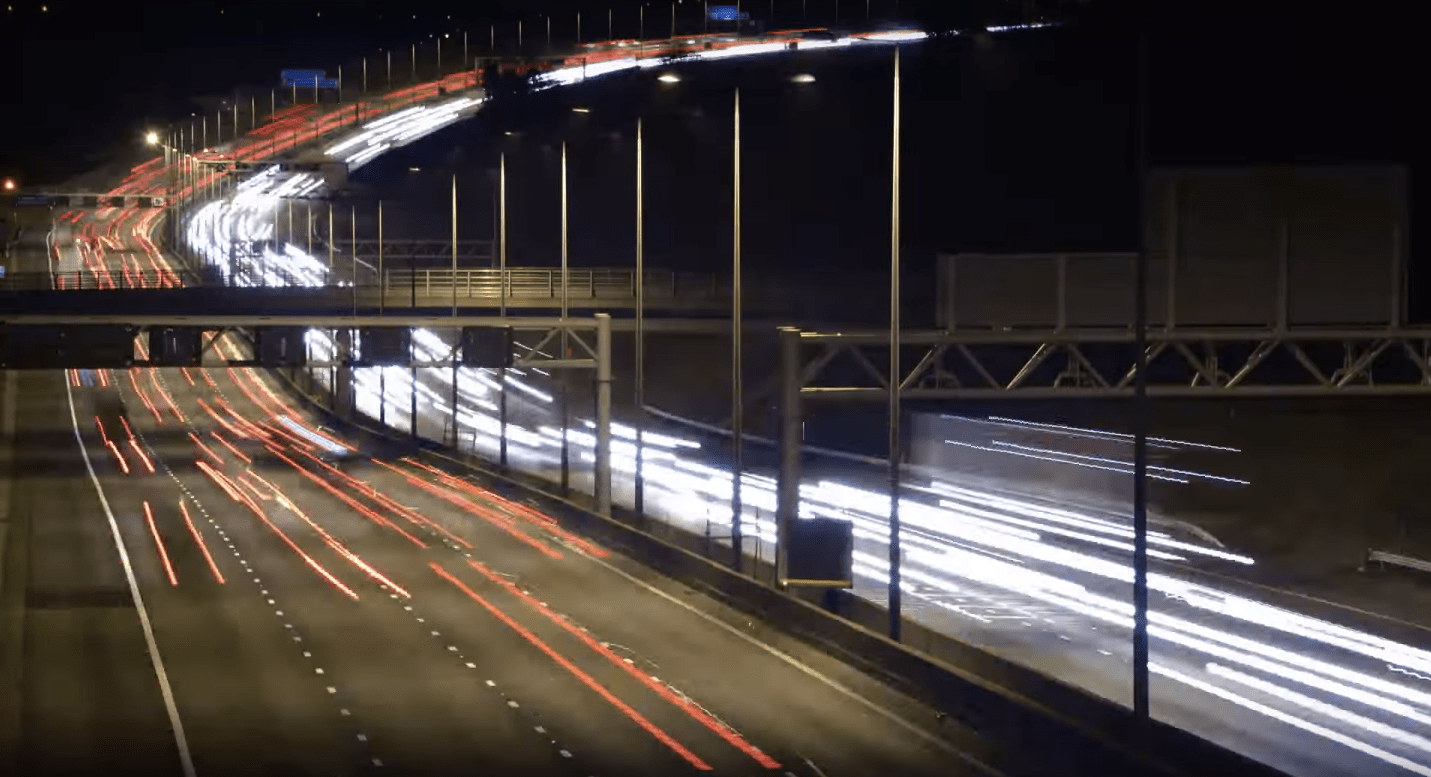Aside from football and condiments, there’s nary a thing more American than a highway. Our collective memory of Route 66 evokes a certain nostalgic image: a ’50s-era nuclear family taking a road trip to the Grand Canyon, singing doo-wop and burning gas with abandon.
But times have changed, and nowadays Route 66 is partially abandoned — and it seems our zest for highway innovation was thrown out the window, too. While our cars have undergone endless efficiency-eking renovations (even down to their paint color) our highways remain largely unchanged.
The Ray, like the rest of America’s roads, doesn’t score well on its environmental report card. It splits habitats, leaks road runoff into waterways, and emits pollution. But there are plans to transform the 16-mile stretch of highway in Georgia into “the world’s first sustainable highway.”
Fast Company reports that Georgia’s Department of Transportation will plant five acres of wildflowers and native grasses along the Ray to filter runoff in the coming months. Some pretty wacky ideas are being considered, too. For example: billboards that pull pollution from the air, an asphalt binder made with hog poop, solar sound barriers, algae farms built into overpasses, and lighting that adjusts to the moon cycle.
The unassuming section of road on I-85 between Atlanta and Montgomery, Ala., could use all the help it can get. From Fast Company:
Three hundred and eighteen tons of exhaust is emitted annually along the 16-mile stretch. The surrounding county’s water quality rating is 60 out of 100, which is close to failing. Sound pollution exceeds 70 decibels, a level associated with increased heart disease, and there are 130 vehicle collisions with deer each year.
While the highway isn’t very green yet, it’s nicknamed “the Ray” in honor of Ray C. Anderson, a sustainability pioneer who passed away in 2011. Right now, the highway’s only concrete evidence of a green initiative is a free solar-powered charging station for electric vehicles.
Let’s hope the idea of greener highways catches on. Last year, Americans collectively drove 3.15 trillion miles. If we’re to continue driving, we’re going to have to change something — it’s Planet Earth’s way or the highway.



